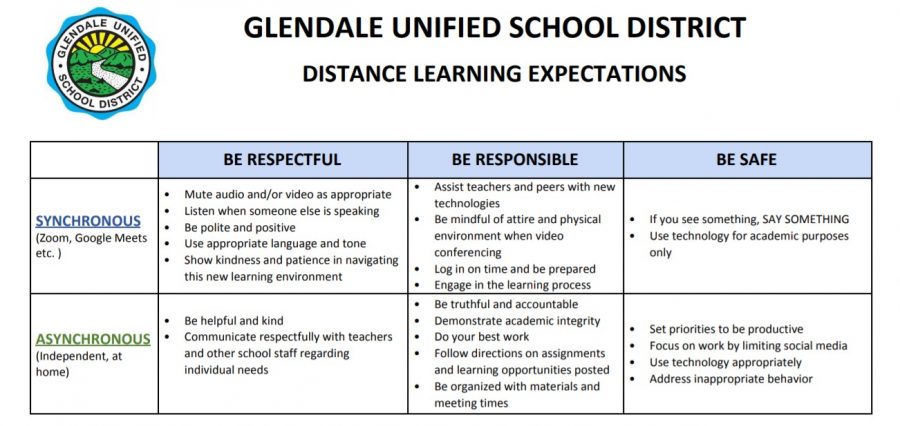Zoom cameras left to preference, not standard
GUSD has established general guidelines for in-meeting and out of meeting behavior it expects from students.
Zoom has become a central component of online schooling, but it has also become draining for some students and teachers. The in-person element central to school has been lost because of remote learning, and so many activities like labs and group projects have been made incredibly difficult or impossible. The core of online learning is that it requires every person in the class to be on the same page.
While GUSD has not stated explicitly that cameras should be required, the California Teachers Association has issued a standard for remote learning: “Regardless of whether a class is recorded, a district’s policies can permit an educator to require a student to leave their camera on during online instruction, for purposes of promoting and tracking student engagement.”
Animation teacher Anthony Lockhart said that “It’s much better to have them on because I get to know the kids.” Lockhart tries to encourage progress in a way that will allow his students to be more comfortable when working. In larger classes that require more intensive participation, however, this may not work as well.
Honors English and Humanities teacher Jennifer Davis shared a similar point: “Seeing someone’s facial expressions, giggles, worried faces, etc. makes the students more human,” Davis said. “When we do return to school, I am going to know those students [better].” It is much easier to engage with a person than a screen. Knowing who you are interacting with is key to a formative experience.
The lack of face-to-face interaction from teachers and between students has to be compensated somehow for both students’ and teachers’ sake. Facial recognition ensures that students are paying attention and are engaged, or the opposite — they are losing focus or struggling with the lesson.
“A student might want that camera off — bad hair day, feeling ill, inappropriate background or location for the camera,” Davis said. Some students may not have cameras on their devices either. While remote learning has presented numerous restrictions, it also allows for a new kind of freedom — privacy. Students can still attend class even if they are not feeling or looking their best and still participate in discussions.
Senior Sophie Peineke agrees with Davis’ sentiment. “A lot of students, especially now, may be struggling with mental health from time to time,” Peineke said, although she does argue otherwise as well. “Having your face on camera for a whole day may not always be a comfortable experience.”
Junior Patrick Velasquez said that he feels that having cameras on should not be a requirement for distance learning despite being useful in monitoring engagement. “Having cameras off allows students to freely choose the most suitable position for themselves to learn,” Velasquez said.

Dream destination? Okinawa, Japan
Interests/ hobbies? Drawing, animating, the martial arts, reading, language learning
In...










